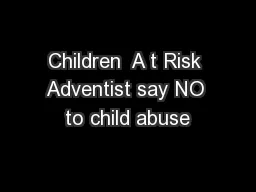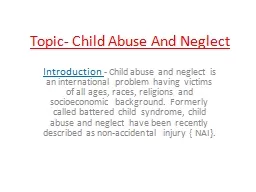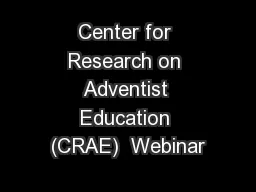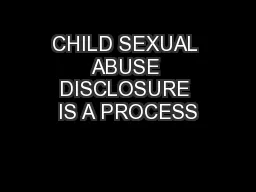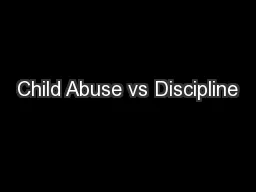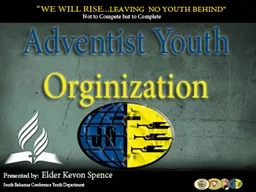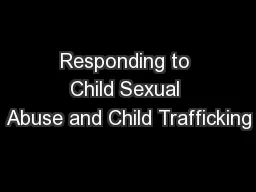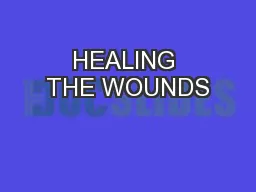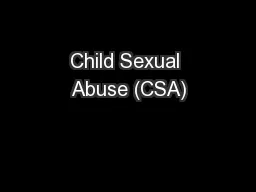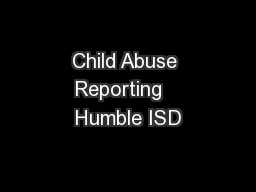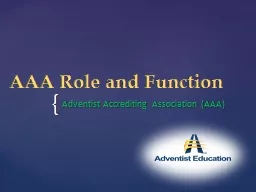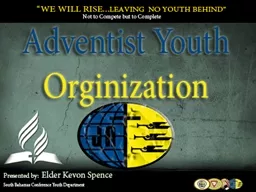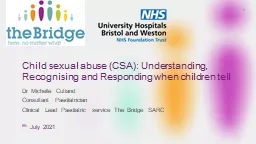PPT-Children A t Risk Adventist say NO to child abuse
Author : tatyana-admore | Published Date : 2018-10-06
Dra Antonieta ASilva Child Abuse Definition from WHO Abuse or negligence of children under 18 years of age that can harm their health development or dignity
Presentation Embed Code
Download Presentation
Download Presentation The PPT/PDF document "Children A t Risk Adventist say NO to c..." is the property of its rightful owner. Permission is granted to download and print the materials on this website for personal, non-commercial use only, and to display it on your personal computer provided you do not modify the materials and that you retain all copyright notices contained in the materials. By downloading content from our website, you accept the terms of this agreement.
Children A t Risk Adventist say NO to child abuse: Transcript
Download Rules Of Document
"Children A t Risk Adventist say NO to child abuse"The content belongs to its owner. You may download and print it for personal use, without modification, and keep all copyright notices. By downloading, you agree to these terms.
Related Documents

